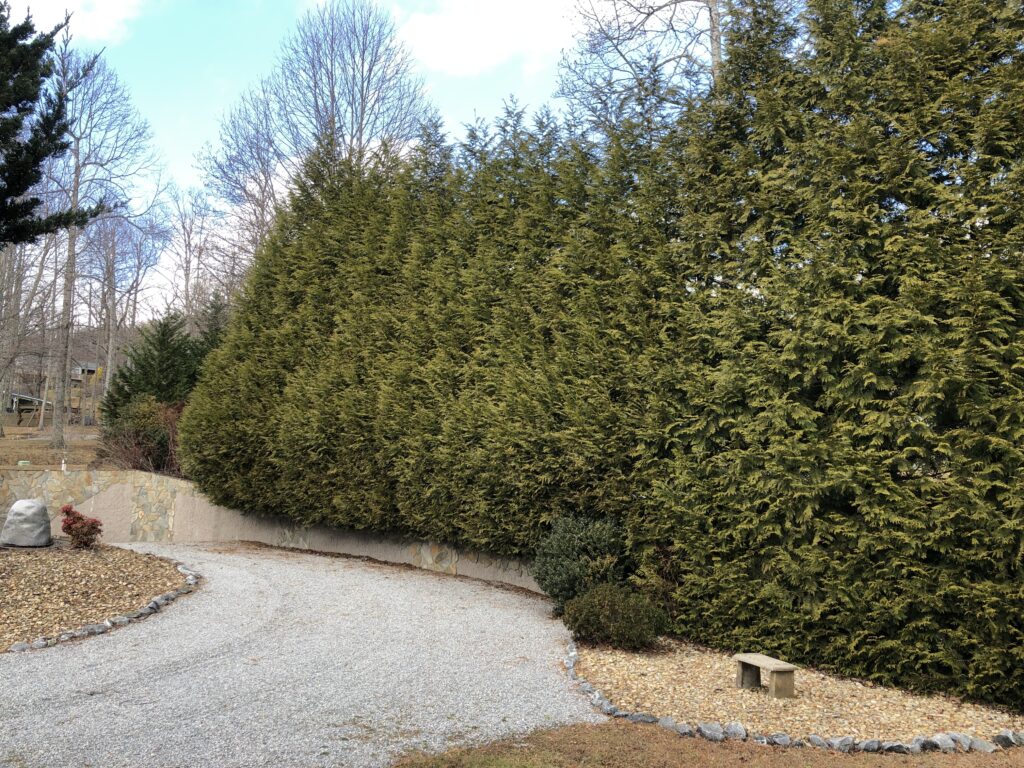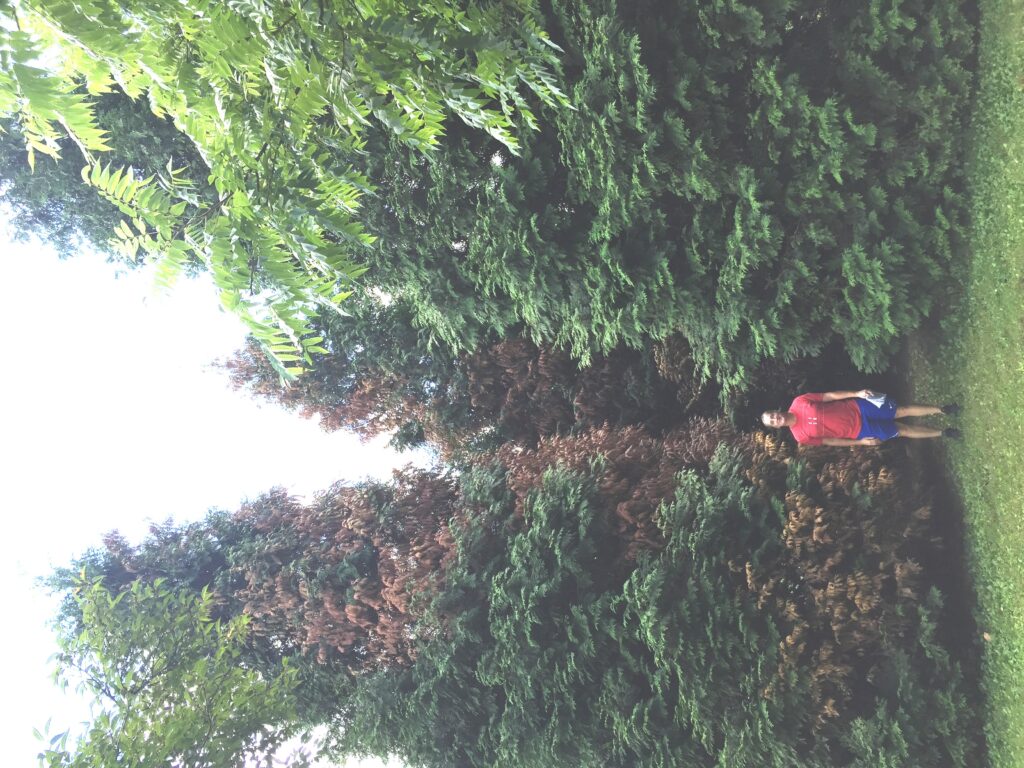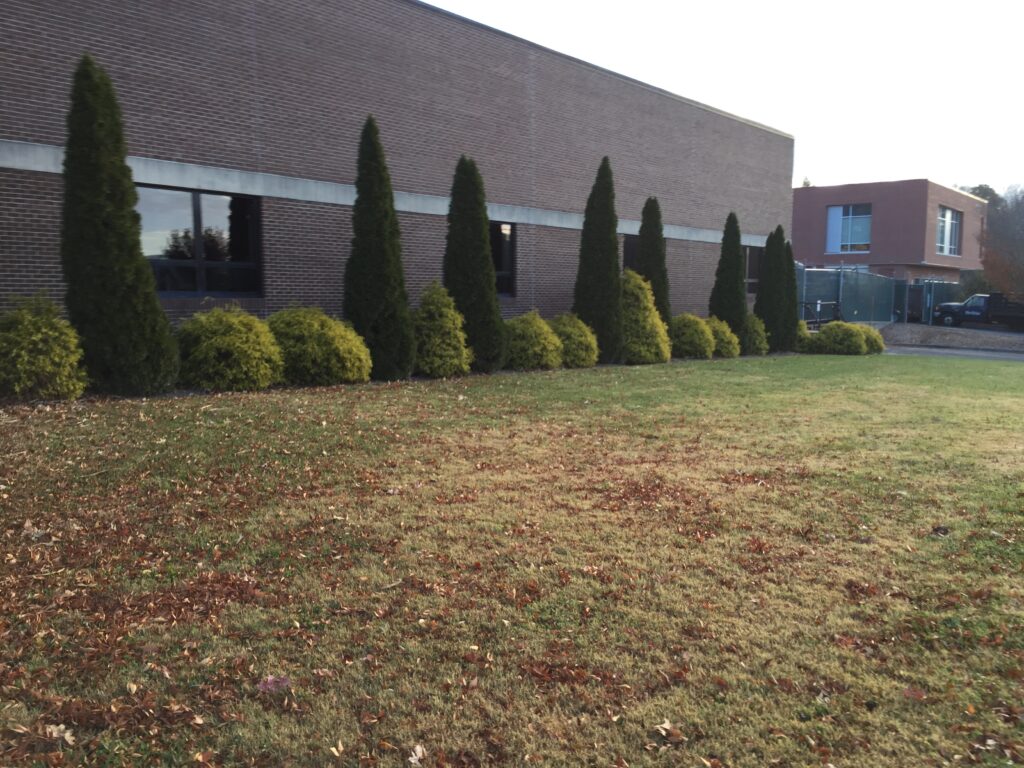Arborvitae and Other Conifers in the Landscape
go.ncsu.edu/readext?1050559
en Español / em Português
El inglés es el idioma de control de esta página. En la medida en que haya algún conflicto entre la traducción al inglés y la traducción, el inglés prevalece.
Al hacer clic en el enlace de traducción se activa un servicio de traducción gratuito para convertir la página al español. Al igual que con cualquier traducción por Internet, la conversión no es sensible al contexto y puede que no traduzca el texto en su significado original. NC State Extension no garantiza la exactitud del texto traducido. Por favor, tenga en cuenta que algunas aplicaciones y/o servicios pueden no funcionar como se espera cuando se traducen.
Português
Inglês é o idioma de controle desta página. Na medida que haja algum conflito entre o texto original em Inglês e a tradução, o Inglês prevalece.
Ao clicar no link de tradução, um serviço gratuito de tradução será ativado para converter a página para o Português. Como em qualquer tradução pela internet, a conversão não é sensivel ao contexto e pode não ocorrer a tradução para o significado orginal. O serviço de Extensão da Carolina do Norte (NC State Extension) não garante a exatidão do texto traduzido. Por favor, observe que algumas funções ou serviços podem não funcionar como esperado após a tradução.
English
English is the controlling language of this page. To the extent there is any conflict between the English text and the translation, English controls.
Clicking on the translation link activates a free translation service to convert the page to Spanish. As with any Internet translation, the conversion is not context-sensitive and may not translate the text to its original meaning. NC State Extension does not guarantee the accuracy of the translated text. Please note that some applications and/or services may not function as expected when translated.
Collapse ▲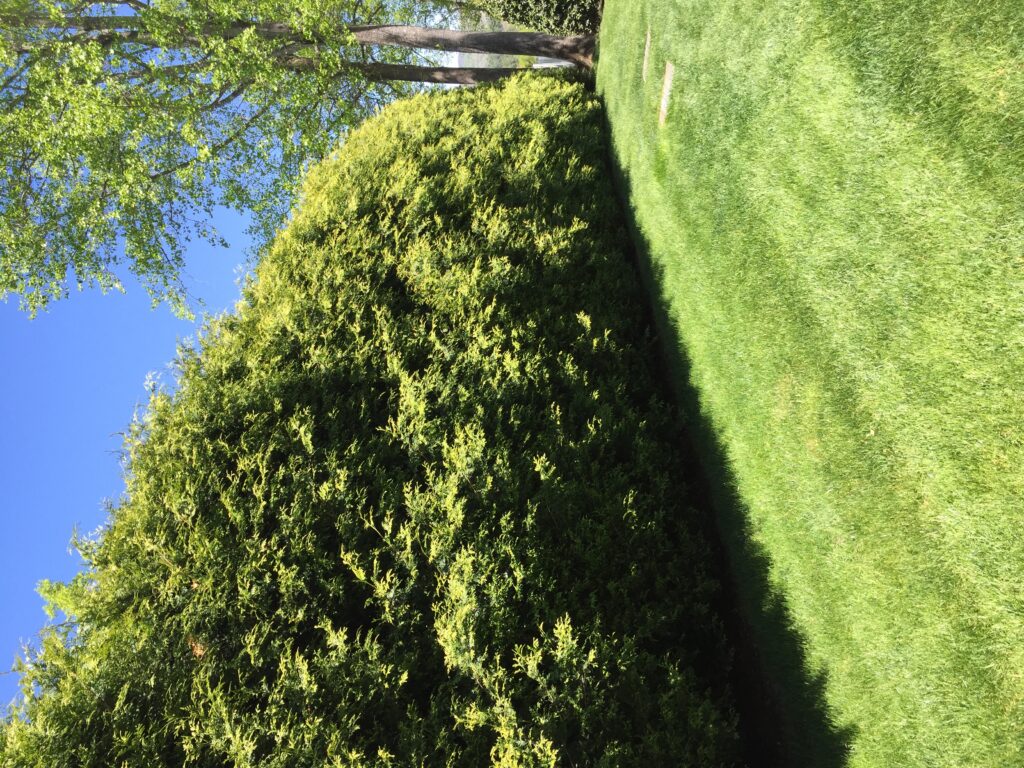 Arborvitae – The common name is latin for ‘tree of life’. Parts of the plant were once used for medicines. The genus Thuja includes two native species. Arborvitae are typically small to medium sized evergreens. Five species are generally used in cultivation from American and Eastern Asian species and their hybrids.
Arborvitae – The common name is latin for ‘tree of life’. Parts of the plant were once used for medicines. The genus Thuja includes two native species. Arborvitae are typically small to medium sized evergreens. Five species are generally used in cultivation from American and Eastern Asian species and their hybrids.
Arborvitaes are characterized by their dense pyramidal shape and fan-shaped flattened branches. The trees are commonly used as living fences and screens to block unwanted views and on property borders. The plants grow quickly and generally have few problems if cared for properly.
Sometimes arborvitae are used for hedges. In this case pruning should be done in late winter. The plan can be hard to distinguish from Chamaecyparis another common landscape conifer. Forestry uses of native species includes poles, siding and shingles.
Arborvitae are typically pest resistant. Diseases include leaf blight, juniper blight, tip blight, cankers; clean out interiors of cultivars due to dense branching capturing dead foliage creating rot. Insects pests include aphids, mites, scale and bagworms.
Species
- Thuja occidentalis – White Cedar/Eastern Arborvitae – native from Canada to North Carolina. Cuttings taken November-March; ‘Emerald’ 10-15’, narrow, conical, cold hardy, dark green; used for screening and accents often corners.
- Thuja plicata – Western Arborvitae – Alaska to California to Montana – not common in the south, one of the parents of ‘Green Giant’.
- Thuja orientalis – native to Korea and northern China; ‘Aurea Nana’, dwarf, dense, globular;
- Thuja standashii x plicata – ‘Green Giant’ – Today this plant is a mainstay of the nursery trade. It has mostly replaced the Leyland cypress for use as living fences. It is a vigorous grower being 50’ tall by 15’ wide and pyramidal in shape. Grows 3-4’ per year. The plant requires adequate water so should be watered during droughts. Generally pest resistant but has developing problems including canker diseases during wet weather.
*New cultivar – Thuja standashii x plicata ‘Junior Giant’ – 15-20’ tall slow growing cultivar that could be a good alternative to ‘Emerald’.
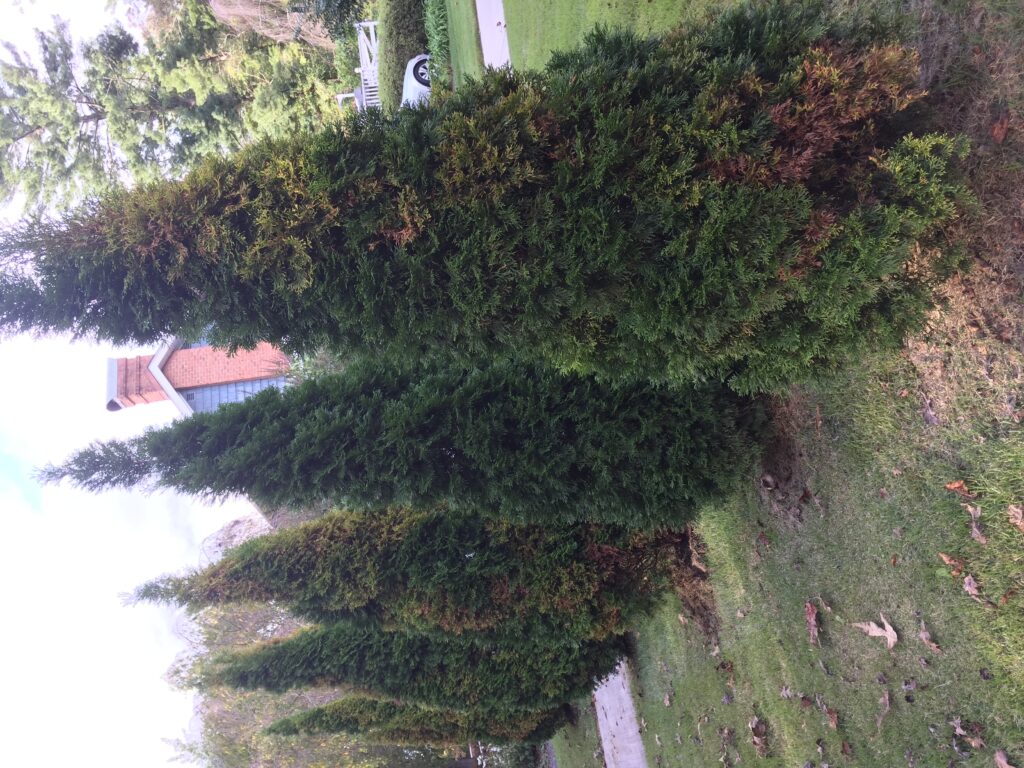
‘Emerald’ arborvitaes with canker disease after prolonged wet weather. After cleaning out the interior dead needles and pruning out dead branches, the plants recovered.
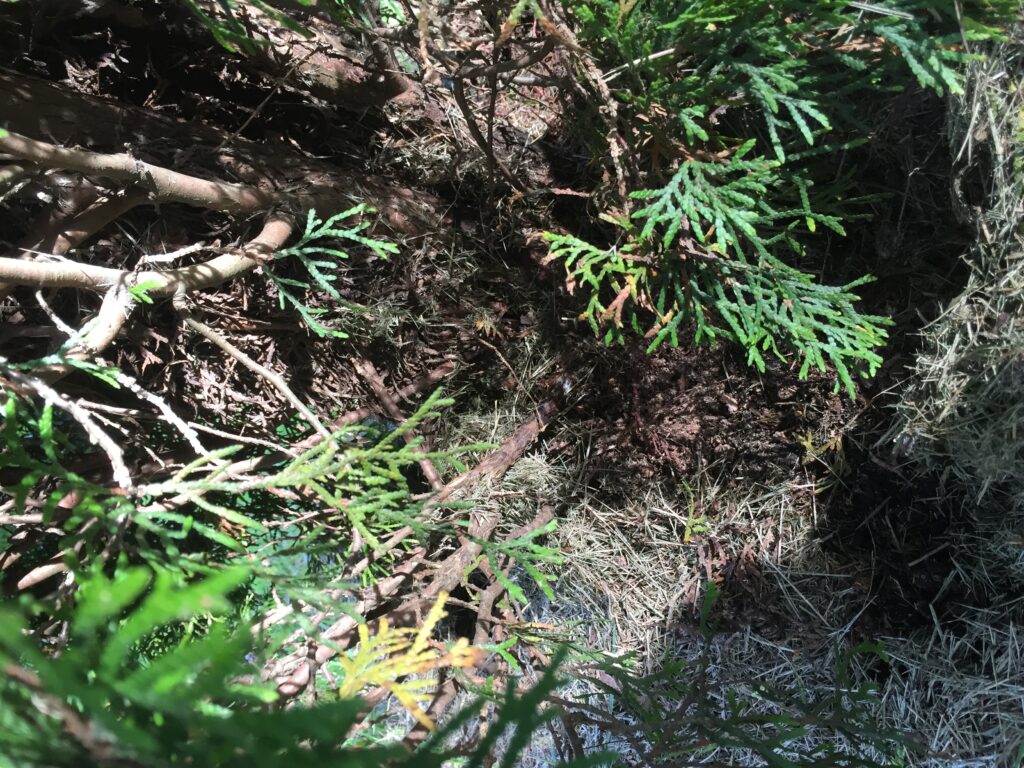
‘Emerald’ arborvitae fungal canker caused by excess dead needles piling up on inside of the plant creating rot during periods of extended wetness.
Other conifers
- Chamaecyparis sp. – commonly known as false cypress, it is a very good plant for the south. C. thyoides is the native Atlantic White Cedar. Other species are from the western US or Asia. ‘Fern spray’, ‘Golden Mop’, ‘Golden Thread’ are common cultivars.
- Cryptomeria japonica Japanese cedar – a stately tree 213’ tall in its native form in Japan. Cultivars abound with ‘Yoshino’ and ‘Black Dragon’ being the most common.
- Tsuga canadensis Canadian Hemlock – Native tree, one of the most beautiful and popular conifers. Softly graceful pyramidal in growth with soft, dark green needles. Requires treatment for HWA
- Taxodium distichum Bald Cypress – Unusual native conifer. Pale green fern-like foliage is shed each fall. Pyramidal habit with a decided accent of texture and form
- Metasequoia glyptostroboides Dawn Redwood – pyramidal, conical habit with a single straight trunk in youth. Rapid grower with beautiful cinnamon bark and fern-like foliage
- Picea abies Norway Spruce – A rapid grower with dark green foliage. Excellent for screening or as a specimen.
- Pinus strobus White Pine – Native, fast grower, will tolerate many different soil conditions
- Pinus virginiana Virginia Pine – Broad, open pyramidal becoming flat topped. Branches spring irregularly from the stem. Good hedge tree tolerant of poor soil conditions





